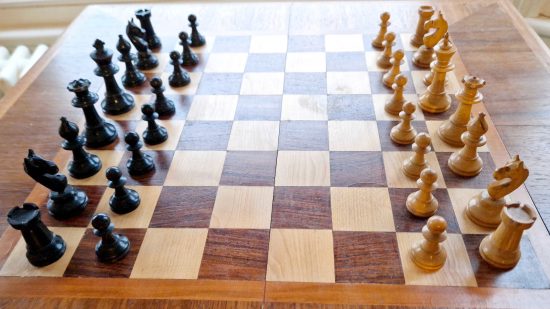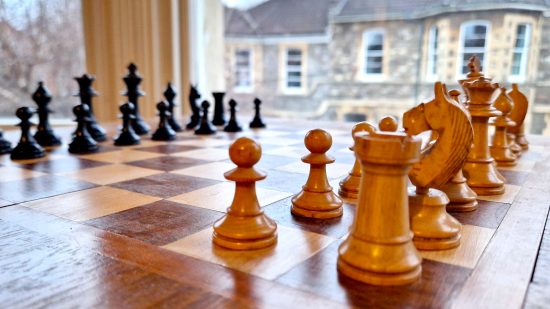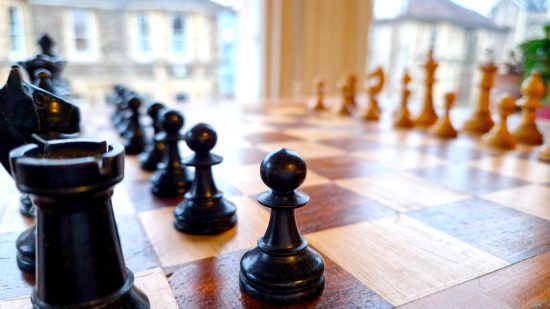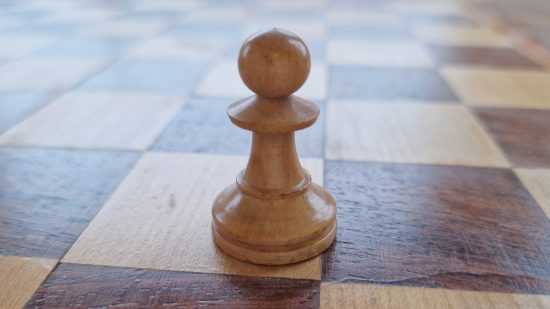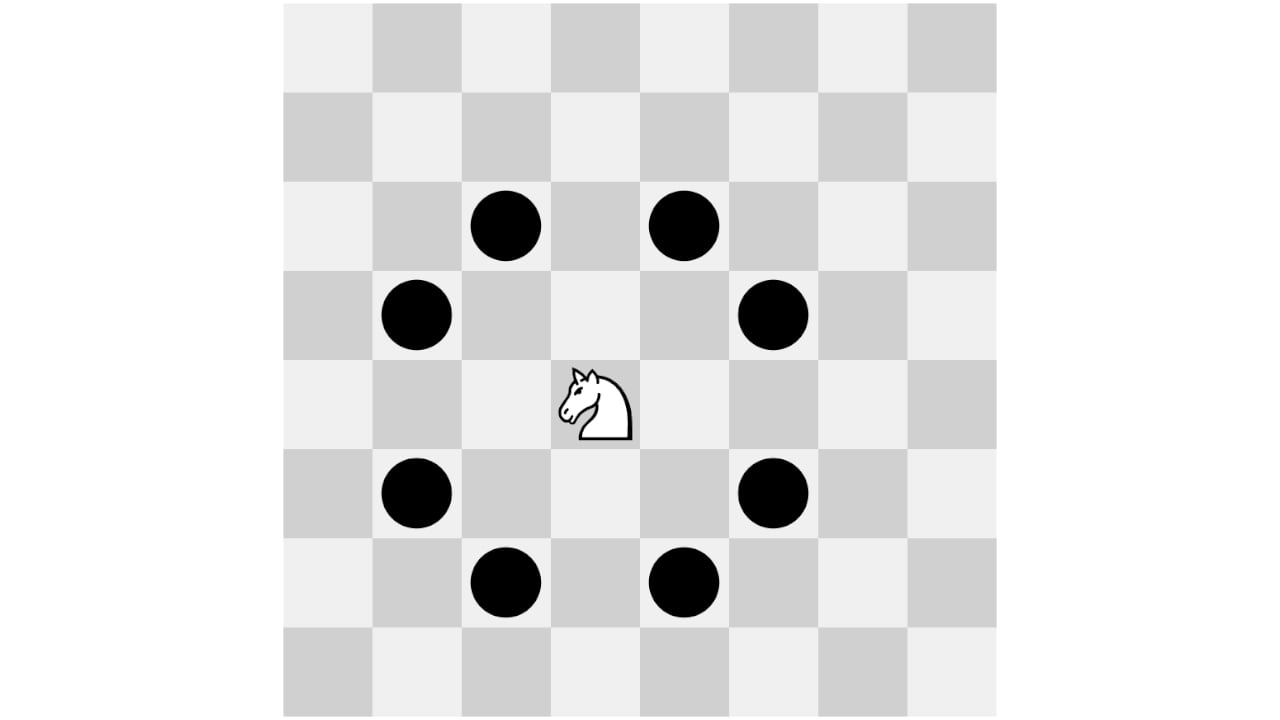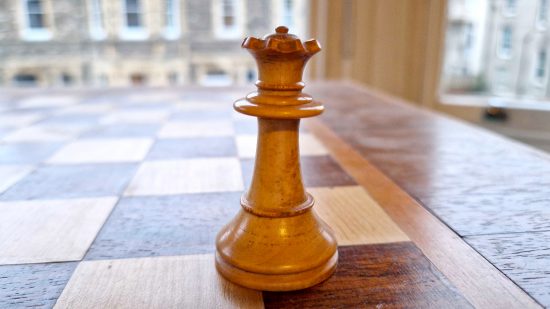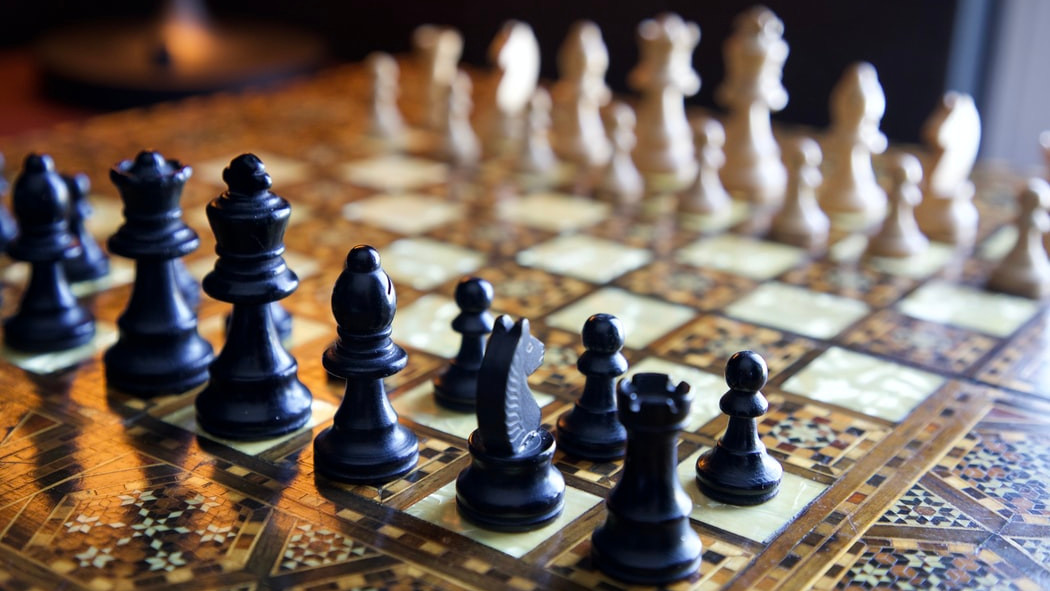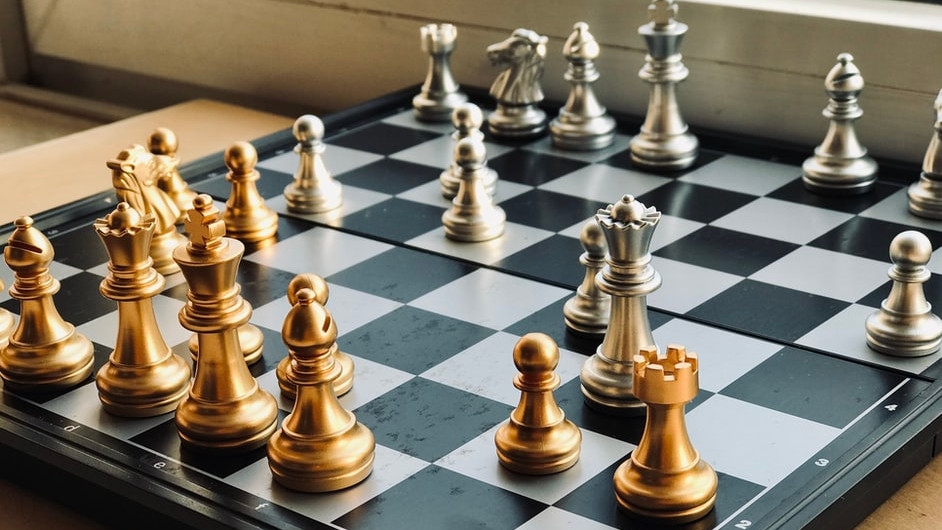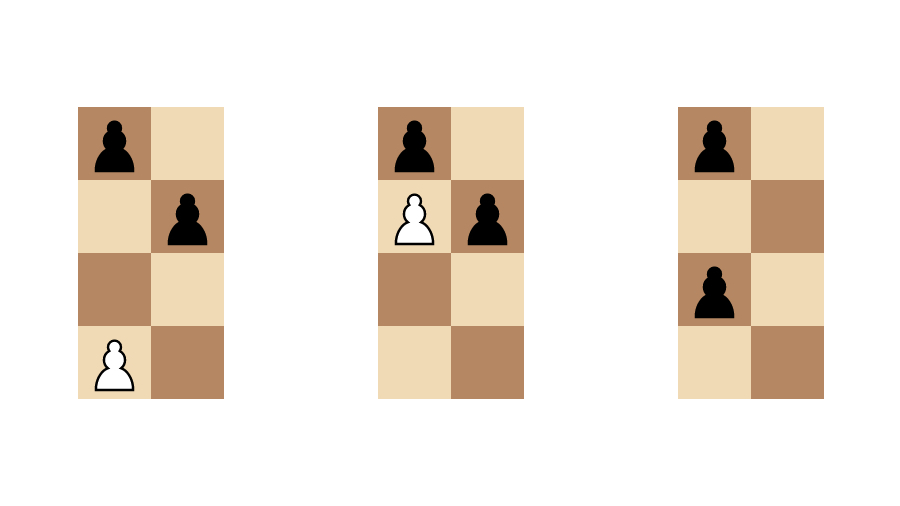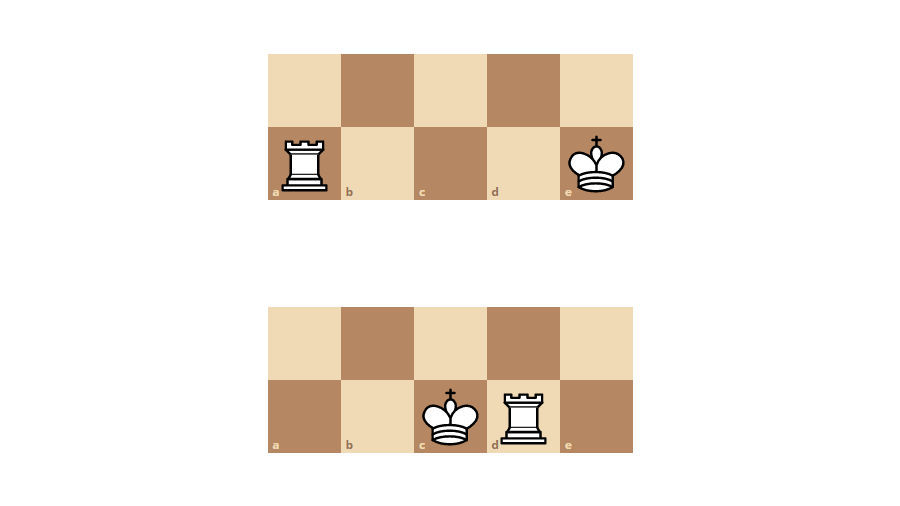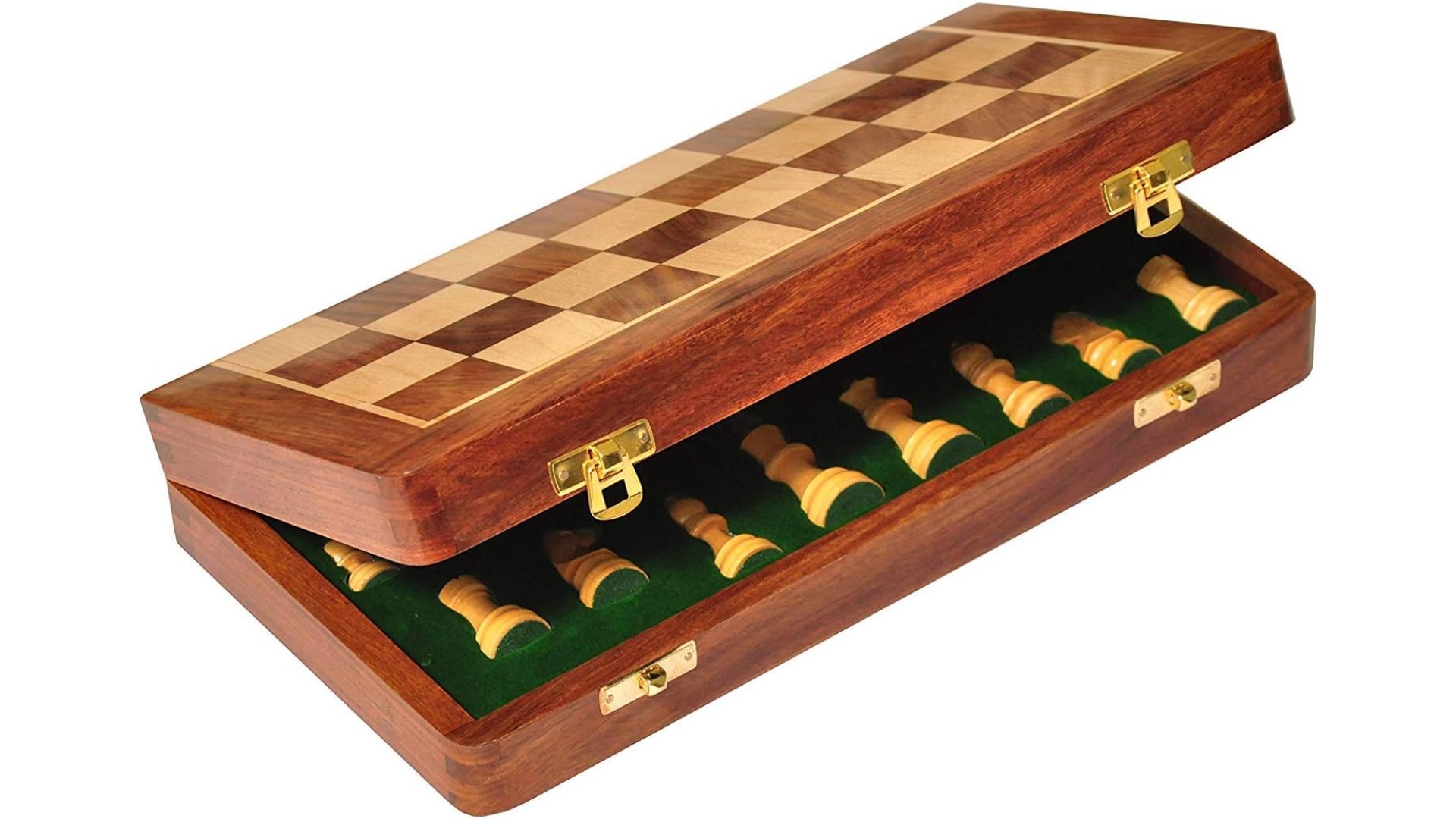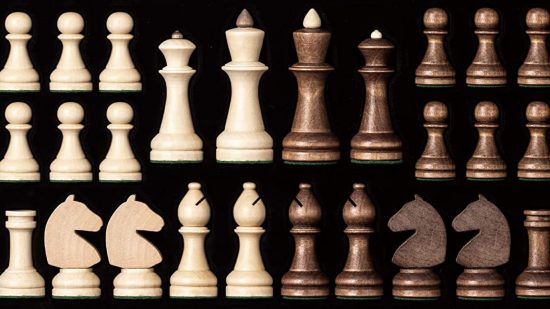Looking to learn how to play Chess? This guide has everything you need to get started (or refresh your memory, if you haven’t played for years). We’ll take you through the basics of your Chess set and pre-game Chess setup, and we’ll explain the basic Chess rules and strategy, including all the chess pieces’ names, moves, and values.
Chess dates back to the sixth century CE, but it’s still among the world’s most played games. The magic of this classic board game is that getting started is dead simple, but the strategy gets as complex and deep as you want.
Chess is just as much a kids’ board game as it is a challenging strategy board game for veteran grandmasters – and you can read on to learn all the rules in minutes.
Here’s how to play chess:
- Chess pieces names, moves, and values
- Chess setup
- Chess rules and how to win
- Chess special moves
- Chess strategies
- How to learn chess
- How to start playing chess competitively
If you’re looking to play at home, these are the best Chess sets to use. For something more modern, try our guide to the best board games of all time instead – or go a bit more literal with the best miniature wargames. For now, though…
Chess pieces names, moves, and values
Before we set up the board and get started, let’s get acquainted with your Chess pieces: what they’re called, how they work, and what they’re worth to you in the game.
Each of the six piece types follows its own movement rules, and each is conventionally assigned a different ‘points’ value to help with judging and planning your strategy (except for the King – he doesn’t get a value because he’s priceless; we’ll explain why in a minute).
Here’s each Chess piece’s name, move options, and points value:
| Piece | Moves | Value |
| Pawn |
|
1 point |
| Knight | Only in ‘L’ pattern:
|
3 points |
| Bishop | Any number of squares, forward or backward, but only diagonally | 3 points |
| Rook / Castle | Any number of squares, but only horizontally or vertically in a straight line | 5 points |
| Queen | Any number of squares, in any direction, including diagonally | 9 points |
| King | One square in any direction, including diagonally (but not into check) | – |
There are also some general movement rules shared between them all:
- No piece can move through another piece, whether that other is yours or your opponent’s.
- You can only move your piece onto a square occupied by another piece by capturing that piece (and you can only capture enemy pieces).
- When you do capture an enemy piece, that’s the end of the move – you can’t continue moving your piece; it remains on the square where you captured the enemy piece.
Now, let’s look at each of them in detail – starting with the lowly pawn.
Pawn
Pawns move directly forward one square. Simple. However, if a pawn hasn’t yet moved (that is, if it’s on its starting square), you can choose to move it forward two spaces instead of one.
Pawns are also unusual in that they capture opponent pieces differently from how they move. Pawns capture pieces by moving one square diagonally left or right in front of them.
They can’t capture backwards, and can only shift diagonally if capturing another piece, not when simply moving.
Rook (Castle)
Rooks – also known as Castles – move any number of squares horizontally or vertically in any direction. They can’t move diagonally, and have to move in a single, straight line.
Knight
Knights move in an ‘L’ pattern: advancing two squares horizontally, then one square vertically; or two squares vertically, and one square horizontally. They must move the full distance of the ‘L’, so can’t stop after moving only a couple of squares horizontally, say.
Crucially, Knights can move through other pieces, allowing them to land behind enemies. This is best thought of as the Knight jumping over its opponents.
Bishop
Bishops move any number of squares diagonally in any direction. They can’t move horizontally or vertically, and have to move in a single straight line.
If you look at your chessboard when the pieces are set up, you’ll see you have one bishop on a white square, and the other on a black square. Since they can only move diagonally, they’ll be tied to these colours for the whole game.
Queen
The Queen can move any number of squares diagonally, horizontally, or vertically. They’re something of a cross between Rooks and Bishops, and are the most powerful pieces in chess.
However, Queens can only move in single straight lines. That means you can’t move a Queen diagonally across the board, then move it vertically up, and finally shift it horizontally all on the same turn. You’ll need to make each of those moves on separate turns.
King
The King can move a single square diagonally, horizontally, or vertically in any direction. That makes the King a pretty weak piece that’s best protected by those around it. Remember, though, that you can’t move your King into ‘Check’ – meaning a position where an enemy piece could capture it next turn.
That’s all the Chess pieces covered – now you know what they are and how they work, let’s get the board set up ready to play.
Chess setup
Here’s how the pre-game chess setup works. First, make sure the board is laid out so that a white square is in the bottom right-hand corner of the sides facing each player.
Now come the chess pieces. Each player sets up their pieces in the same way, and fills the two rows of squares closest to them. The first row (that is, the one nearest to the board’s edge), follows a specific arrangement: Rooks (Castles) are placed in each corner, Knights are next to them, and then come the Bishops.
Royalty fills the two remaining squares. Place your Queen on the square that matches its colour (so, if you’re playing white, place your Queen on the white square), and your King on the single square remaining.
The second row is easy to fill: place a pawn on every square. That’s it. Each player should now have two filled rows.
Chess rules and how to win
Playing chess might seem complex if you watch experienced players at work – but believe us, the Chess rules are very simple. Let’s start with what counts: how you win the game.
How to win Chess
There are only two ways to win a game of Chess: either by your opponent resigning; or by forcing your opponent into a position called Checkmate.
This happens when their King must move to escape being captured by one of your pieces – but they can’t, because the only available moves do not escape the threat.
There are lots of ways you can achieve this, and they all involve a combination of:
- Dominating the board to restrict your opponent’s movement
- Capturing key pieces from your opponent’s side to limit their options
So, now you know the endgame – but not how to get there. Here’s how to get things started.
Chess rules
Before starting the game, flip a coin to randomly choose who’ll play with the White pieces, and who’ll play the Black pieces. It’s important this is a random decision, because White always goes first in Chess.
Each turn, one player moves one of their pieces (following the movement rules above), with turns alternating between players. You’re never allowed to skip your go or refrain from making a move, but you can always move any piece still on the board that belongs to you.
You’re not just here to have a jolly old peaceful stroll around the board, though – this is war! Every move you make should be part of your strategy to checkmate your opponent’s King – and that means looking to capture enemy pieces, in order to take territory and dominate the board.
How do you capture pieces in Chess?
If you move a piece onto a square that’s currently occupied by an opponent’s, you’ll ‘capture’ that piece. When you do, remove your opponent’s piece from the board, and place your piece where it once stood. The captured piece is placed in ‘prison’ off the board, on your side.
Capturing is central to the game’s objective – but remember, it’s only a means to an end. You can’t win the game purely by capturing pieces, and every capture you make should be in service of your strategy to trap and Checkmate the King.
In many situations during the middle part of the game, you’ll need to decide whether to focus on capturing enemy pieces, or aggressively chasing the King, trying to put him in Check. What’s Check, you ask? Well…
What does ‘in Check’ mean in Chess?
When a King is put in a position where it will be captured on the next turn if it doesn’t move away, they are said to be ‘in Check’. The player in Check must then use their turn to stop their King from being captured next turn, thus getting themselves out of Check.
They might do this by capturing the enemy piece that is set up to attack their King, blocking the attacking piece, or moving their King to another square where it is out of check.
Also, you cannot make a move that you would place your King in check. That would effectively be handing victory to your opponent.
How do you Checkmate your opponent?
As we said, the objective of Chess is to ‘Checkmate’ your opponent’s King – i.e. put them in Check, with no possible move that could be made to escape from Check. Once this is the case, you win the game.
But how do you get there? Well, there are many answers to that question – some of which are covered in the Chess strategies section below – after all, the question of how to achieve Checkmate is the central strategic problem of this game, and this game has challenged humanity’s greatest minds for centuries.
But, in short, in order to Checkmate your opponent, you’ll need to use the Check threats from your more powerful pieces to create a ‘cage’ around the enemy King. In a few cases, skilled players can achieve this very quickly, using their opponent’s own stationary ranks of pieces as an obstacle to the King’s movement options, and rapidly pinning him into a ‘Mate before the game’s even got started.
Such moves are easily avoided by equally skilled opponents, so you’ll see it happen only rarely. Much more commonly, you’ll need to do it by picking off your opponent’s best pieces before they take yours, simultaneously limiting their strategic options to continue, and increasing your own control of the board – thus allowing you free rein to construct your cage around the King.
Often, it becomes clear, long before an actual Checkmate appears, that one player no longer has the resources to catch up to victory – and, if so, that player will usually choose to resign.
What does resigning mean in Chess?
The only way to win at Chess, other than by Checkmating your opponent, is if they resign from the game. This means they are conceding: they declare that the game is over, and that you have won.
When you resign in Chess, you signify this by tipping over your King so it lies flat on the board, defeated. Normally, the only reason to resign in Chess is if you no longer believe there’s any way for you to achieve victory within the time limit (if you’re using one).
This can be because you’ve simply lost so many key pieces that you can’t think of a way to achieve Checkmate – or because you no longer believe there’s any way for you to escape being Checkmated yourself.
There is one other, more boring way for the game to end, however…
What is stalemate in Chess?
If neither player can make any more legal moves, or the game reaches a ‘dead position’, in which neither player can win through legal moves, then the game ends in a tie – this is known as Stalemate.
Stalemates are rare, though, and you’ll find your early games end in more resignations than checkmates or draws.
At this point, you know everything you need to play your first few games of Chess! Once you’ve done so, and are getting a feel for the basic rules, read on below for some more advanced rules and tips to learn.
Chess special moves
The above sections explain around 95% of Chess’ barebones gameplay. But, once you’ve got the basics down, there are three extra special moves you’ll want to make sure you understand before entering any organised tournaments, or serious Chess games.
The three Chess special moves to know are:
- Pawn promotion
- En passant
- Castling
Pawn promotion
If you manage to move a pawn all the way to the opposite side of the board it will be ‘promoted’ to a Queen, Rook, Bishop, or Knight. You get to pick the piece it’s converted to, although a Queen is the usual choice given the piece’s strength. Put the new piece in the square that the Pawn currently occupies, and remove the Pawn from the board.
The new piece follows all the movement rules it usually would, as if it had never been a Pawn. There’s no limit to the number of Pawns you can promote during a game, and your choice of promotion isn’t limited by previously captured pieces, either. You could theoretically convert every Pawn into a Queen, and have them all on the board at the same time.
En passant
Often forgotten by beginner players, En passant is a powerful move. It comes into play when you move a Pawn forward two squares from its starting position. If by moving a Pawn two squares instead of one, you moved it over a square in which an opponent pawn could have captured it, your Pawn can be captured by your opponent on their next turn, as if you had moved the Pawn only one square. The idea is that you can’t evade capture by taking advantage of your Pawns’ two-square movement boost.
Your opponent must invoke en passant on their next turn (i.e. immediately following the movement of your Pawn). If they forget to, then it’s bad luck for them, and they lose the chance to capture your Pawn using en passant.
Castling
Castling involves moving your King and one of your Rooks on a single turn. To perform it, move your King two squares towards your chosen Rook, before placing the Rook in the adjacent square on the other side of the King. You’ll end up with your King and Rook bunched up next to each other towards one side of the board. Either Rook can be used in the manoeuvre.
However, castling is a very situational move that requires two conditions to be fulfilled: the Rook and King haven’t yet moved in the game, and there are no pieces between them.
You also can’t perform castling if your King is in check, which effectively means you can’t use castling as a way of escaping check. Nor, as usual, can castling be used if it would put your King in check.
Castling that uses the Rook closest to the King is dubbed ‘kingside’ castling, while that which uses the Rook closest to the Queen’s starting position, it’s called ‘queenside’.
Chess strategies
Now you know how to play chess, but how do you win? Here are a few chess strategies for beginners that’ll help. They’re basic pointers that are easy to follow, but should give you a leg up over your opponent. Even the most advanced grandmasters follow these strategies.
Control the centre of the board
At the start of every game of chess, the centre of the board is entirely open. Move your pieces into the free space early to take control of the board and grab the advantage. Taking the centre for yourself will limit the movement options of your opponent, while freeing up space for your own pieces. Rather than hanging back while your opponent advances, take the fight to them.
Move several pieces at the start
In the opening turns of a game of chess, it can be tempting to focus on a single piece. Moving one piece across several turns might seem like the best way of quickly attacking your opponent. But it’s usually a recipe for disaster. While you’re galavanting across the board, your opponent has probably developed their entire frontline, taking the centre of the board, and putting you on the back foot. Make sure to move multiple pieces in the opening few turns to give yourself a sturdy foundation.
Defend your King
The King is the most important piece in chess. You need to keep it safe at all times. That means not moving it out into the open, nor abandoning it too early by moving all of its neighbouring pieces away. As a good rule of thumb, it’s best to castle your King as soon as possible. By moving your King away from the centre of the board you nestle it into safety, while bringing your rook into a more useful position.
How to learn chess
When you’re trying to learn chess, practice makes perfect. After reading through the basic rules above, sit down with a pal to have a go at setting up and playing a test game.
Don’t worry about the special moves for now. Instead, focus on memorising the movement methods of all six pieces, and identifying when a King is in check or checkmate. Keep these rules explanations handy, so you can easily refer back if you get stuck.
If you don’t have any pieces or a chessboard to hand, no problem. Chess works as a fantastic online board game, and there’s plenty of well-optimised internet versions that are free to play. We reckon chess.com is the best among them for letting you practise against bots, or challenge your friends.
Although chess has something of a reputation for being precise, competitive, and mentally taxing, you should try and play whichever way you feel most comfortable. Sure, you could test yourself against experienced opponents, or train your reactions with a chess clock – but you could also trundle through lots of casual games on your own, in your own time, to build confidence.
Play in whatever way you find fun, rewarding, and entertaining – even famous chess grandmasters like Magnus Carlsen didn’t get there without finding their own groove with the game.
How to start playing chess competitively
Maybe you’re feeling pretty confident in your chess skills by now. If you want to take things to the next level, you can look into competitive chess games.
If you want to play competitively, you should expect to play chess tournaments in person. However, that doesn’t mean the internet is totally useless – you can use it to find competitive chess games. The US Chess Federation (or the English Chess Federation if you’re UK-based) shares the dates and locations of chess tournaments. If you have a local chess club near you, you may also be able to find tournaments to enter through them.
If you’re thinking of joining a tournament, there’s plenty of admin you’ll need to get right. Some tournaments may expect you to sign up in advance rather than on the day, while others may require you to be a member of the organisation in charge of the tournament.
You should also check whether you’re expected to bring your own chess boards, clocks, etc. We’d suggest yes: it’s better to be safe than sorry, and you might have time for a few practice games between rounds.
It can also be helpful to understand the rating system used in chess tournaments before you begin playing competitively. Chess Federations will assign players a rating that represents their skill level, and these are calculated based on how well players do in competitive tournaments.
A variety of rating systems have been used in chess’ history, so make sure you’re familiar with the right one for your tournament. For example, the US Chess Federation uses a national rating system that differs from other countries.
Finally, if you’re looking to play competitively, you should start thinking competitively. Publications like The Chess World can help you develop your understanding of chess strategy, and you should start analysing games (your own and those of skilled chess players) to look for ways to improve.
Now you’re a confident chess player, why not try some other classic board games out? We can teach you how to play dominoes, how to play backgammon, and even how to play checkers. If you prefer playing card games, our tutorials can teach you the blackjack rules or how to play solitaire. Or, if you’re after something more current, we can even show you how to play Dungeons and Dragons with our beginner-friendly guide.
